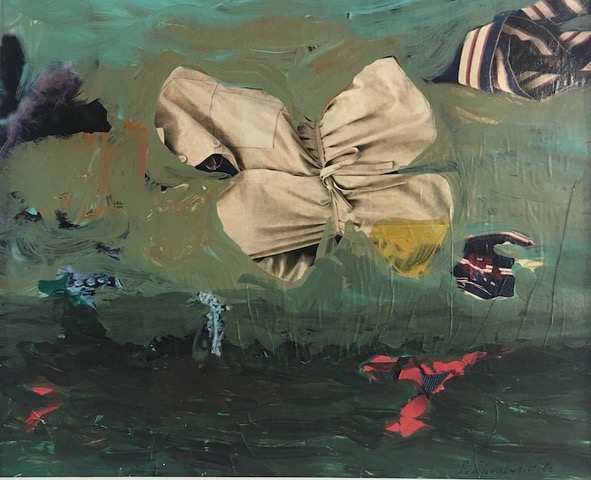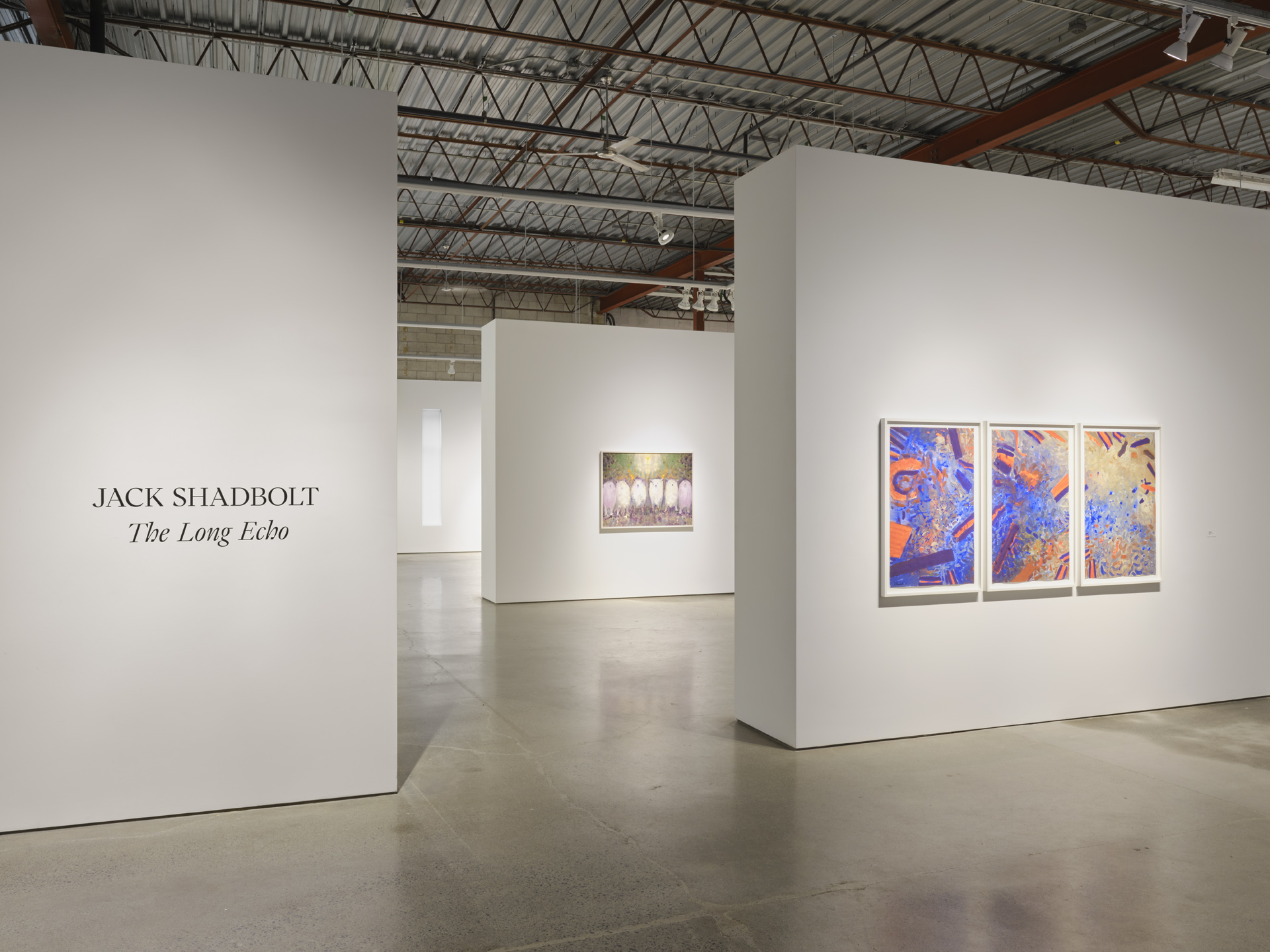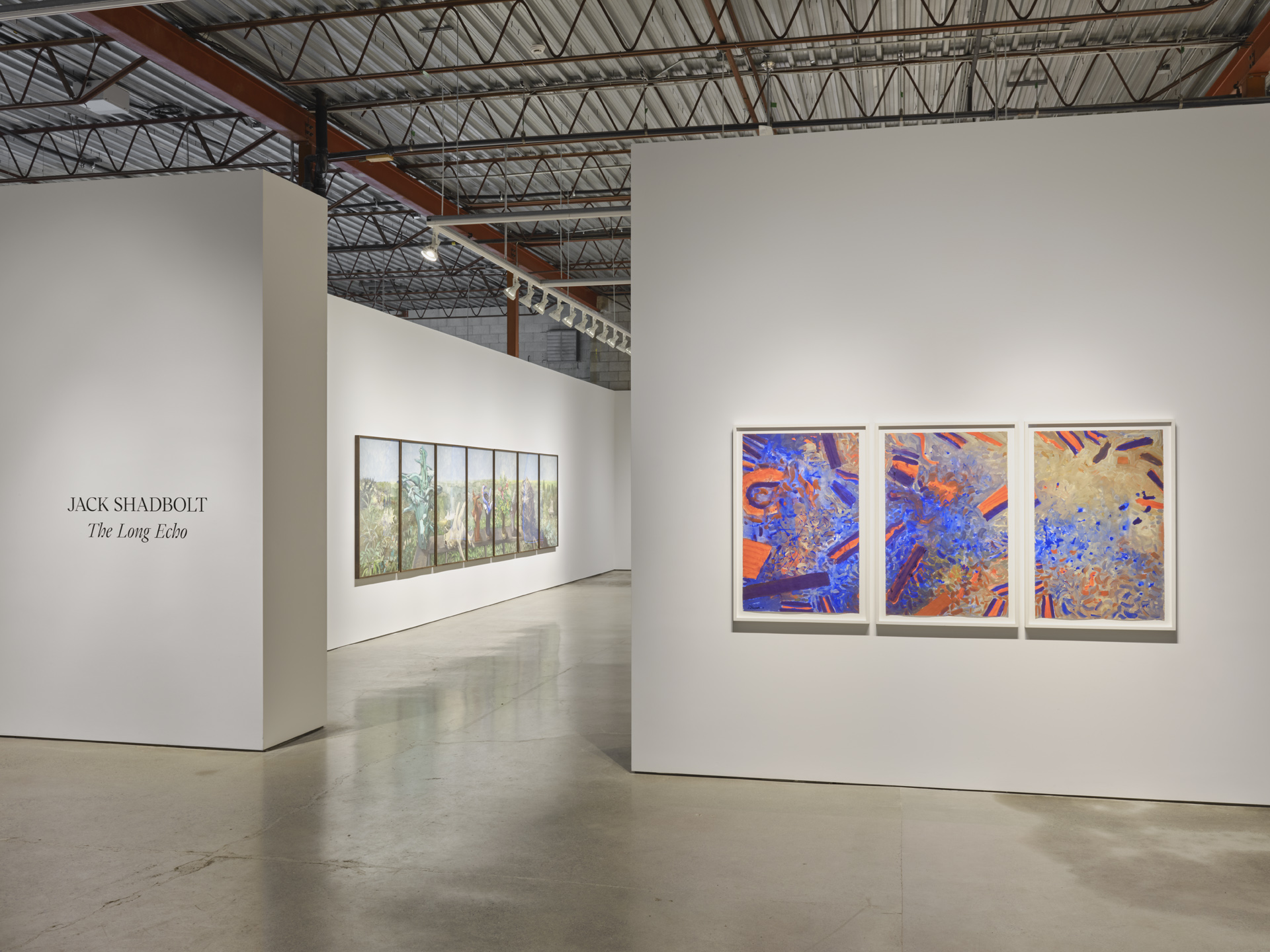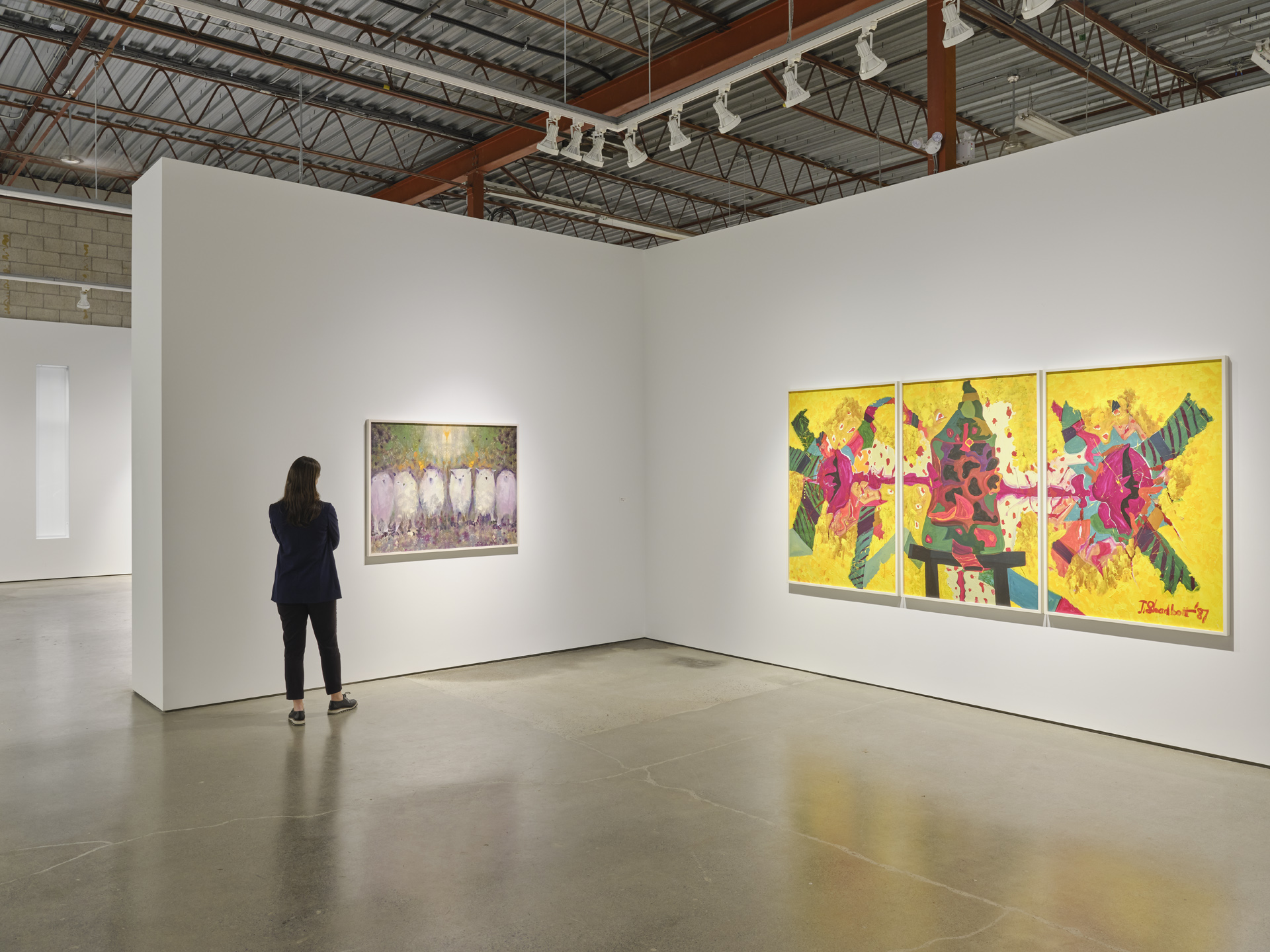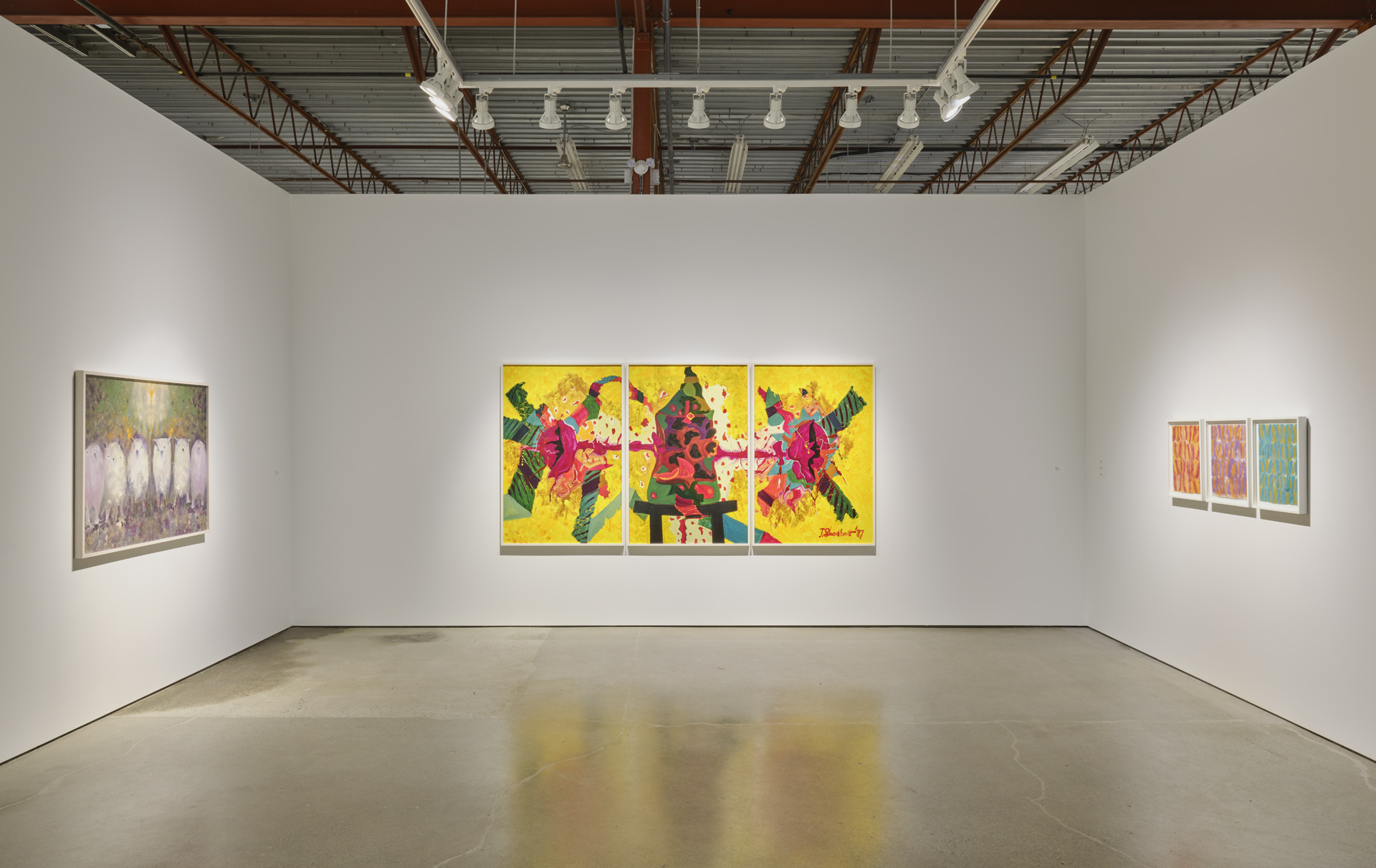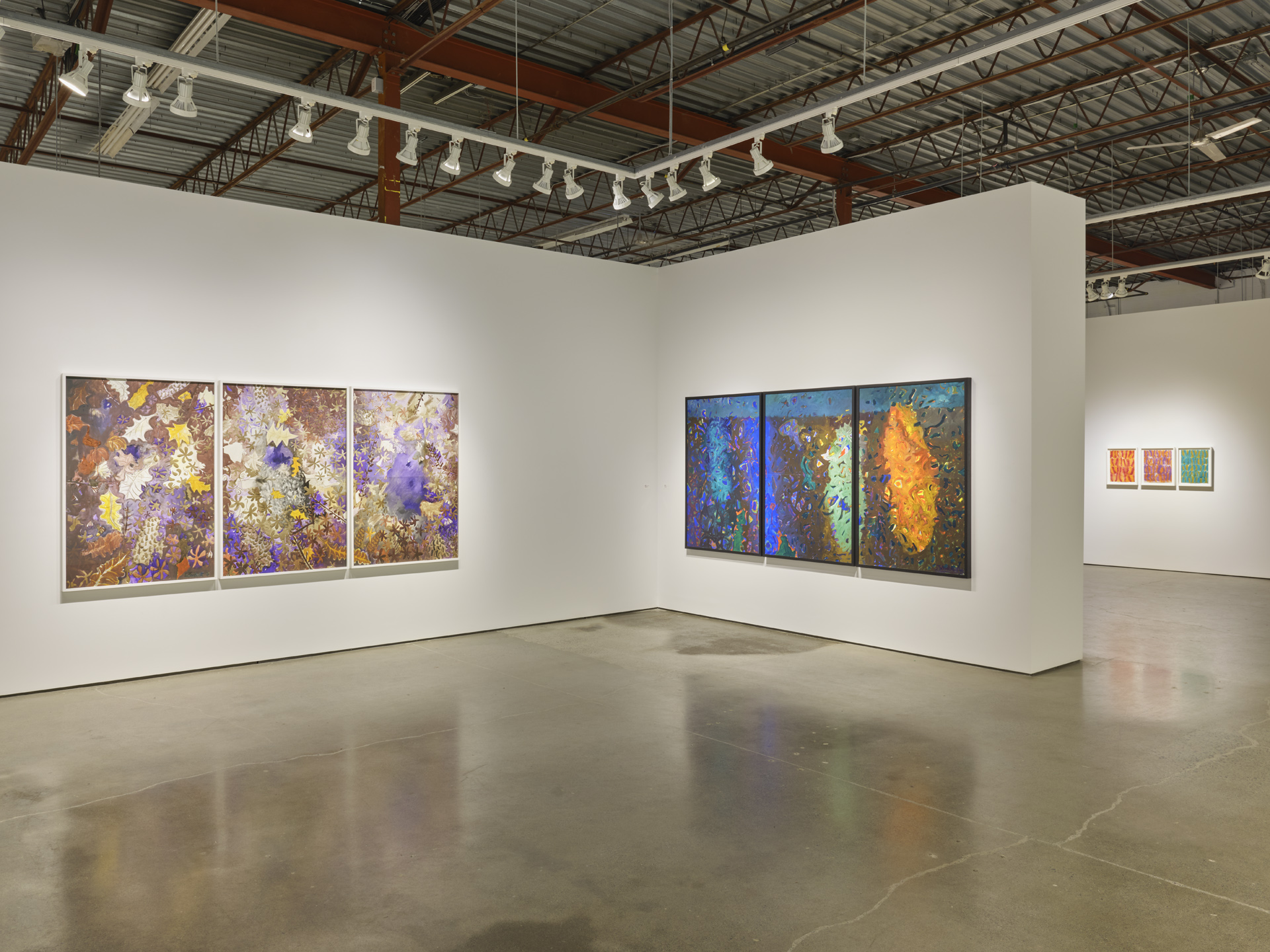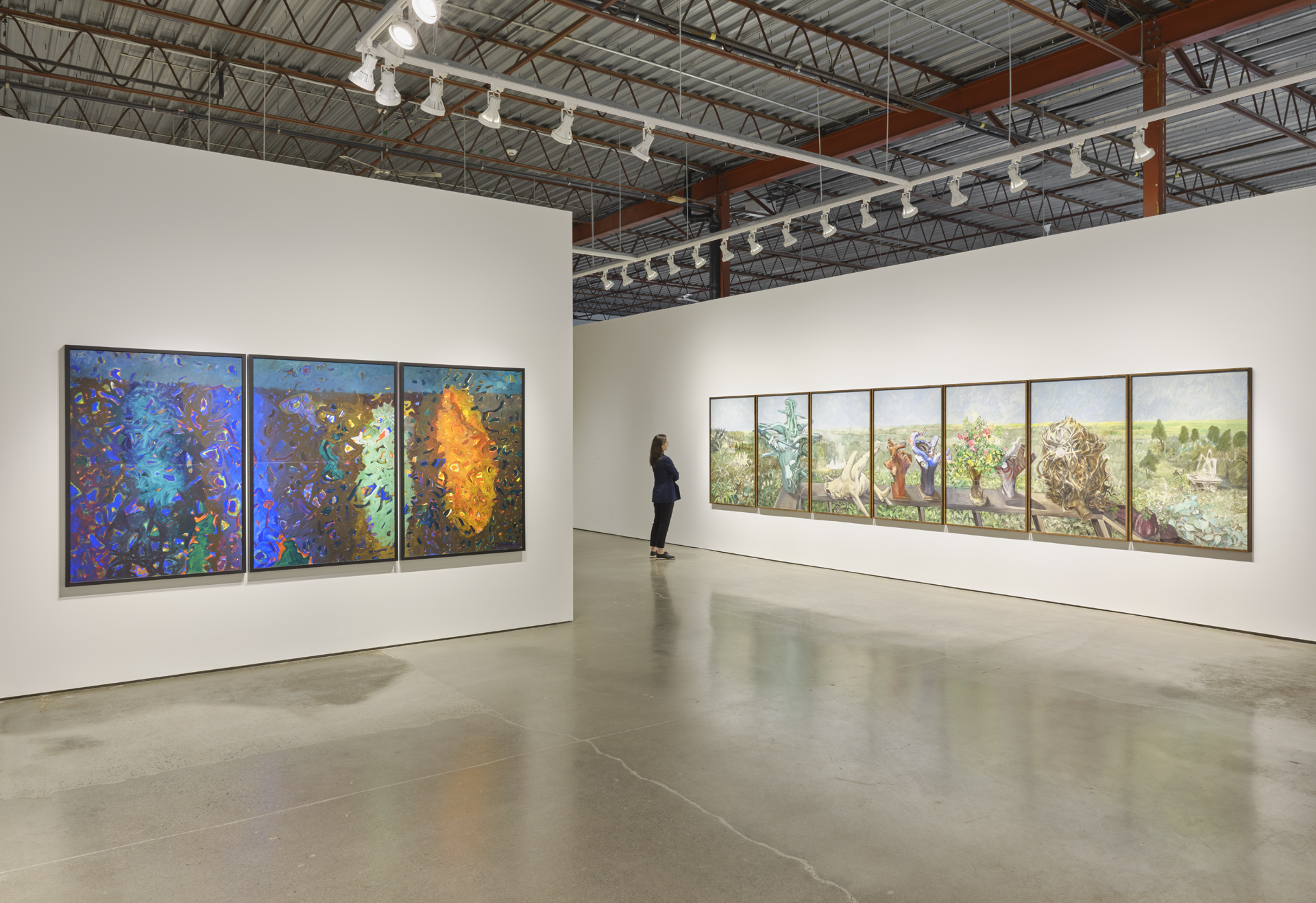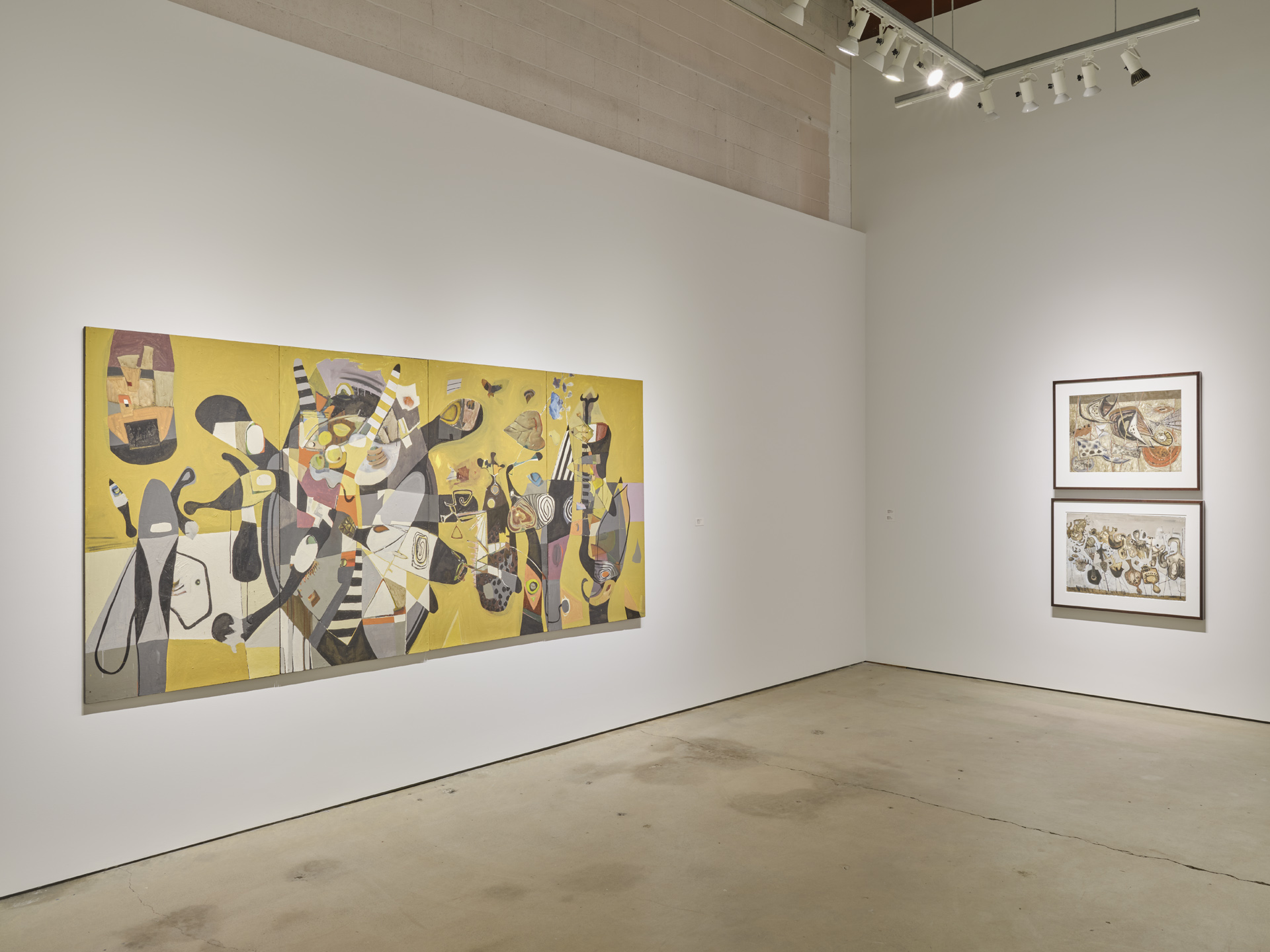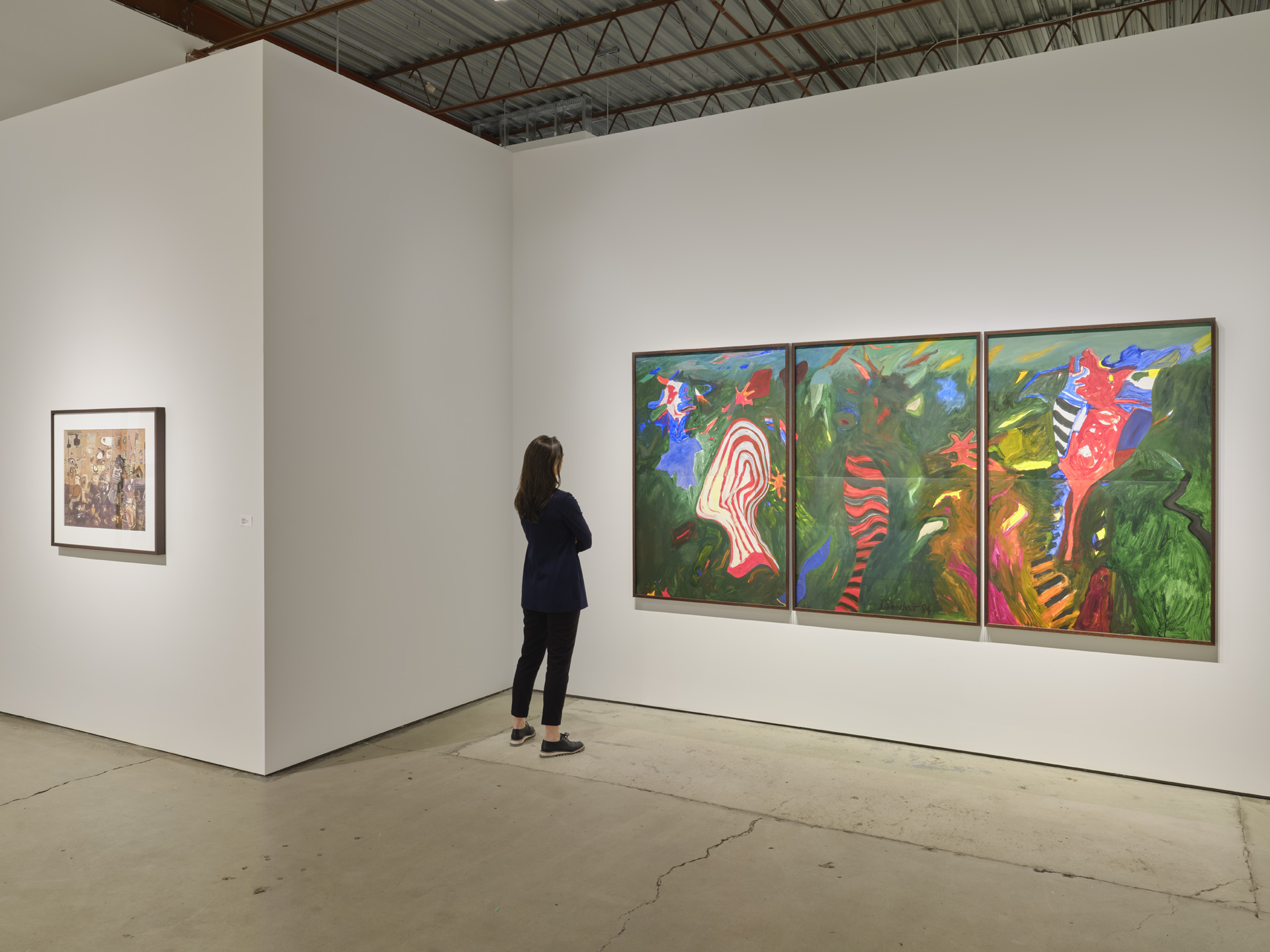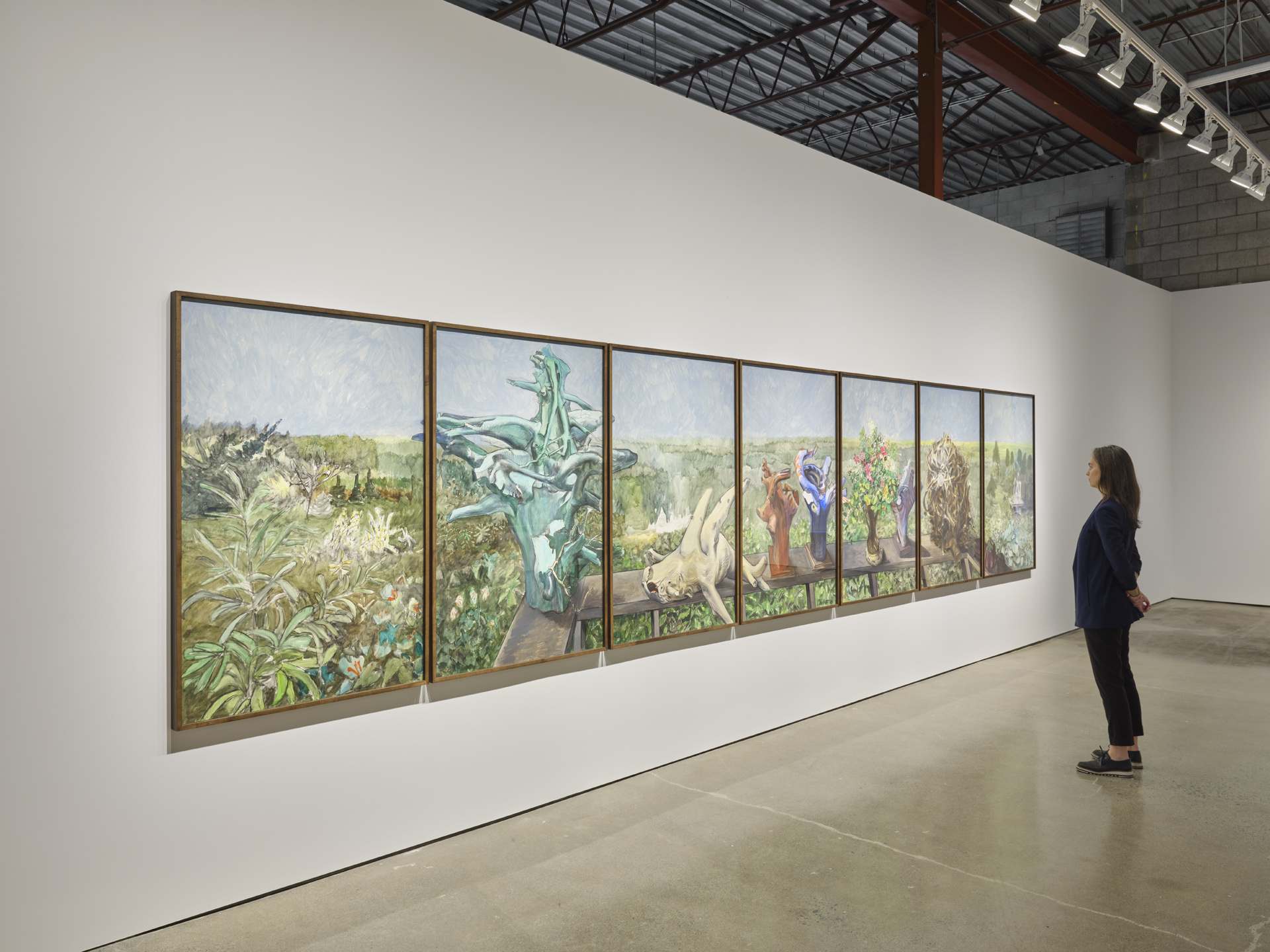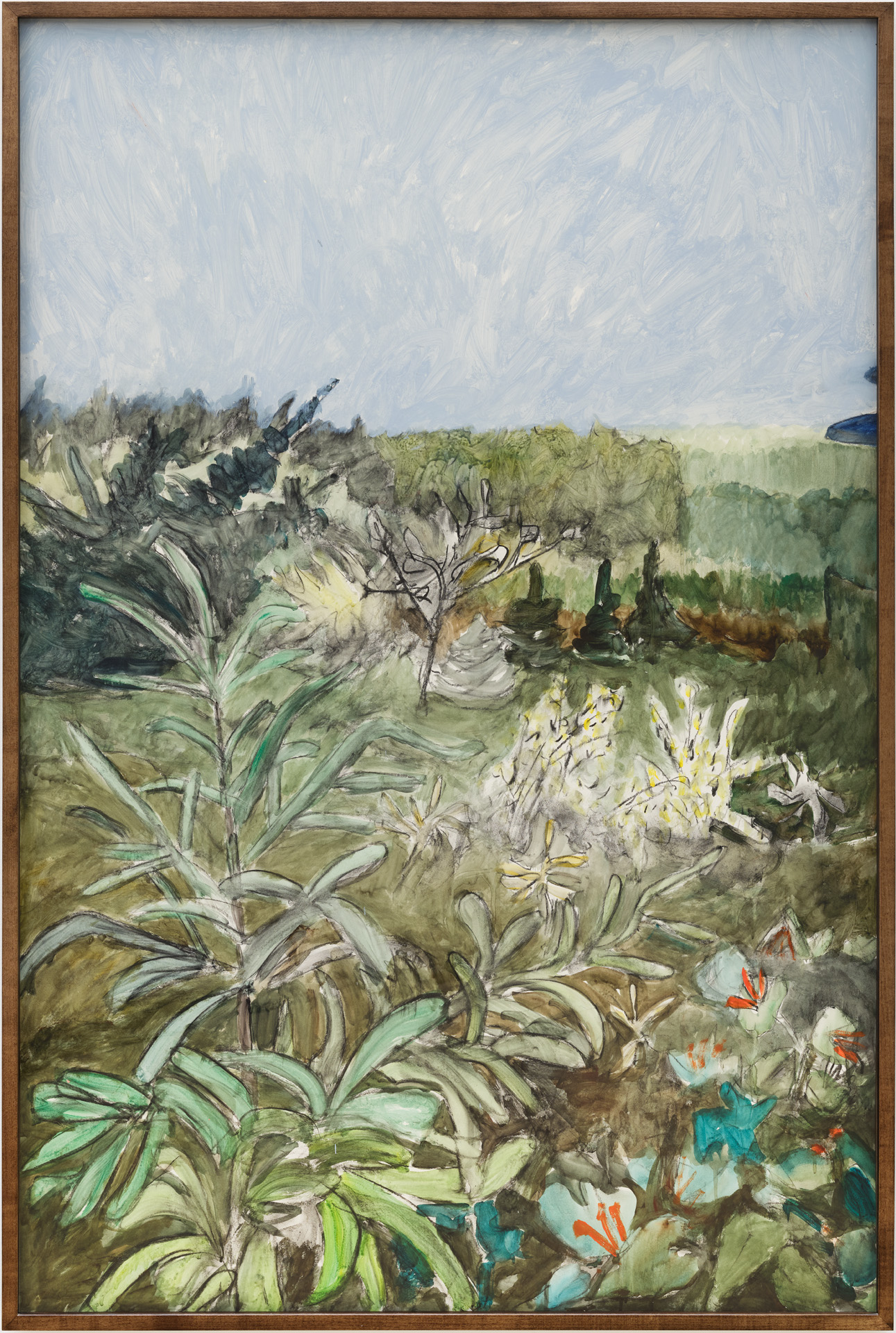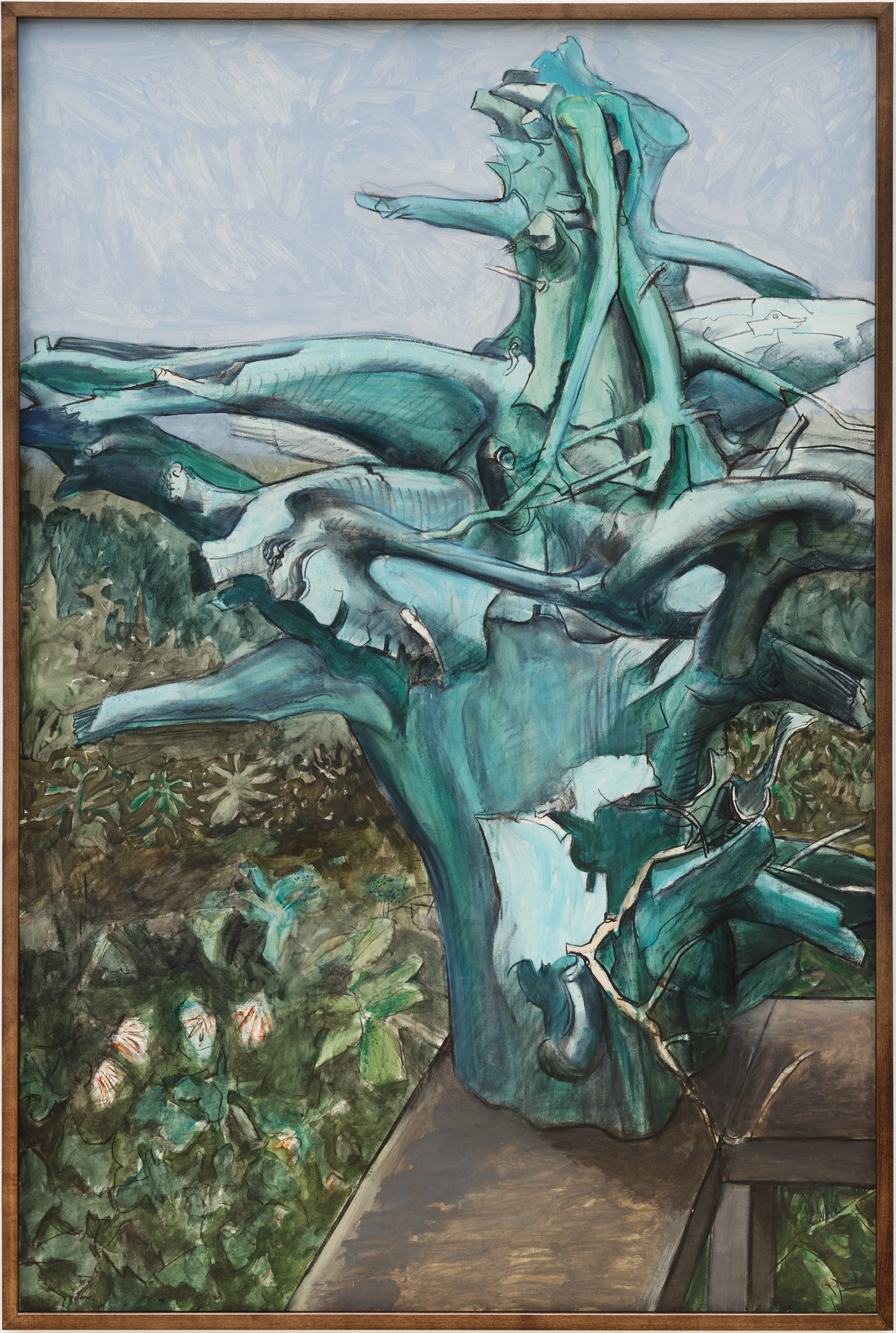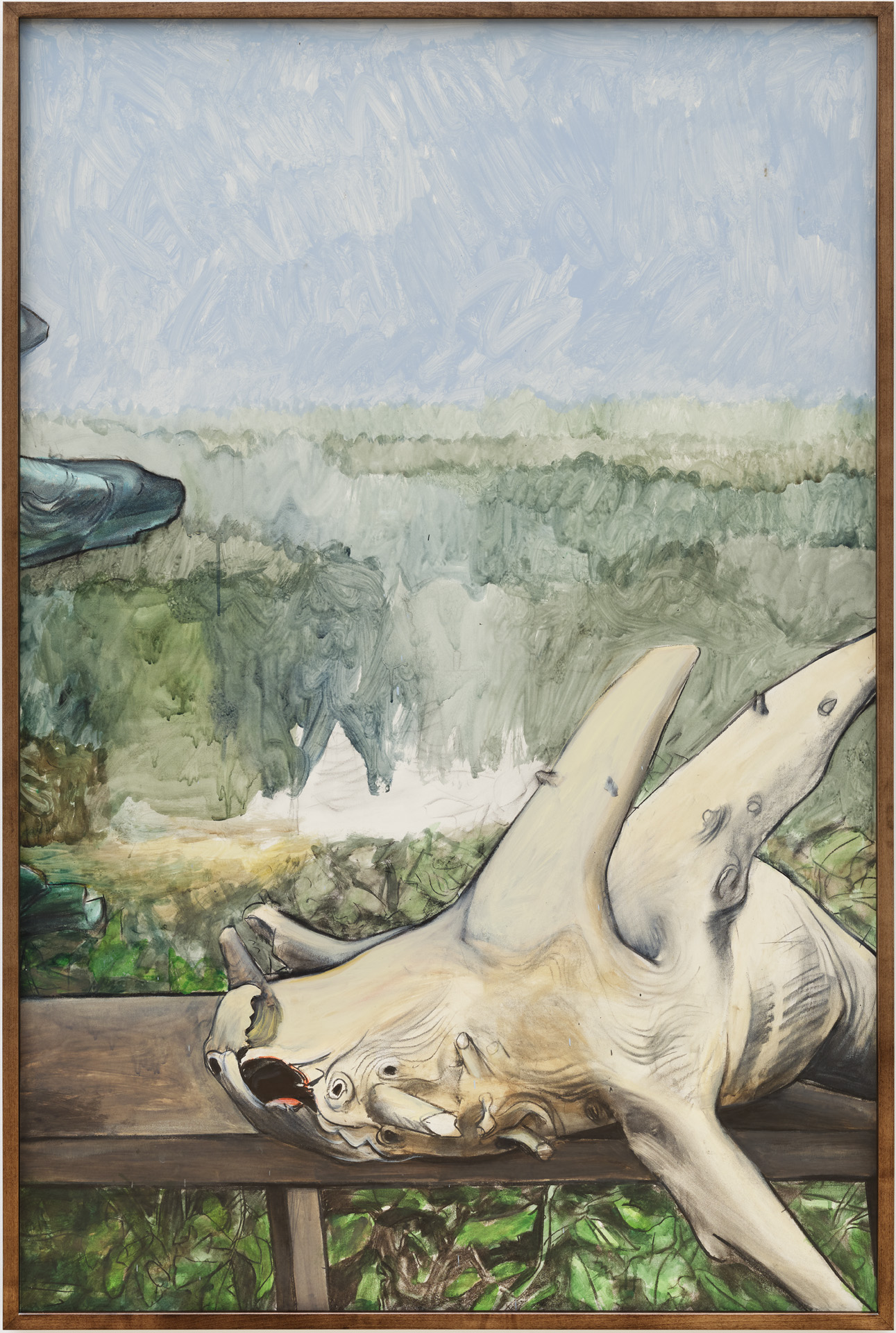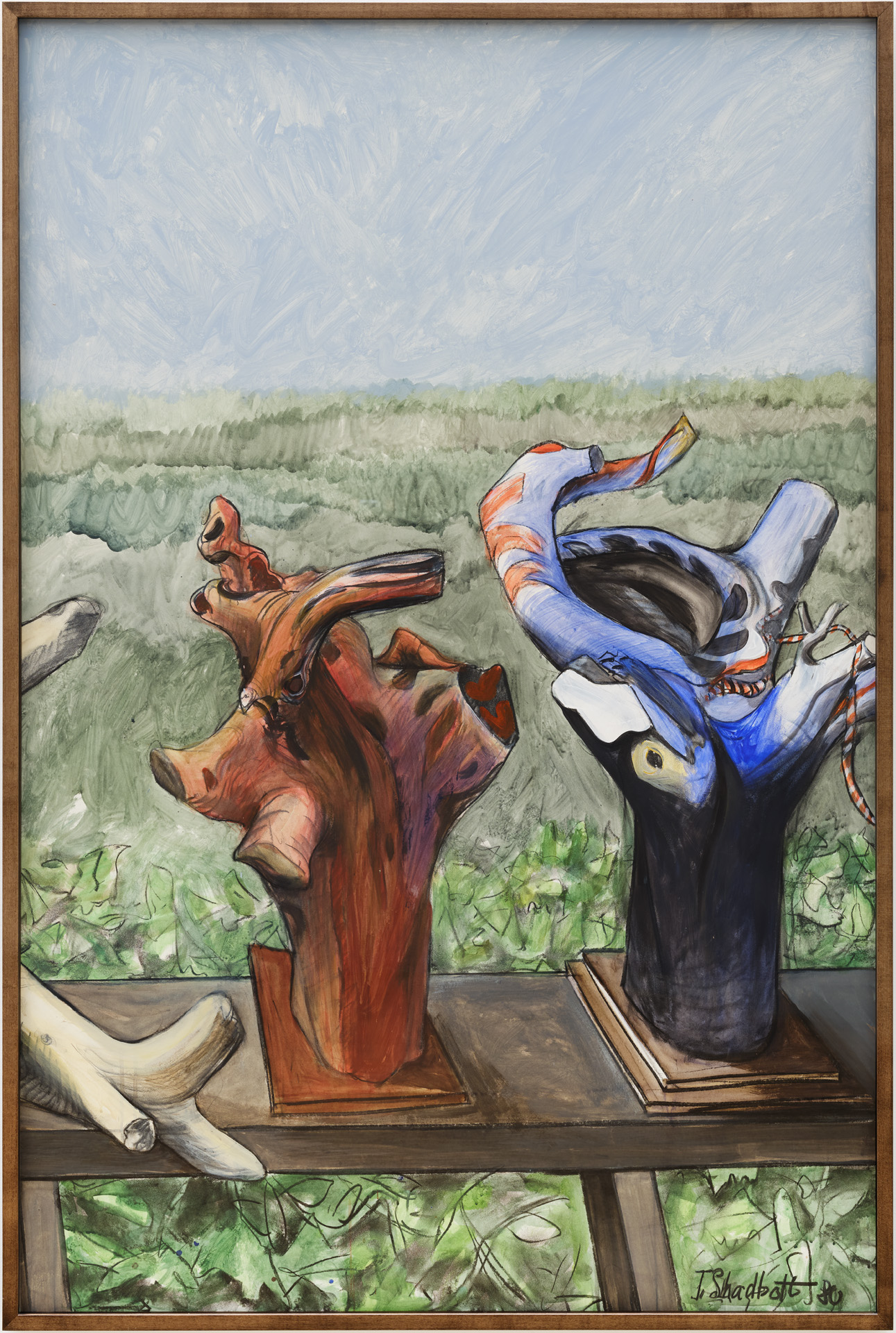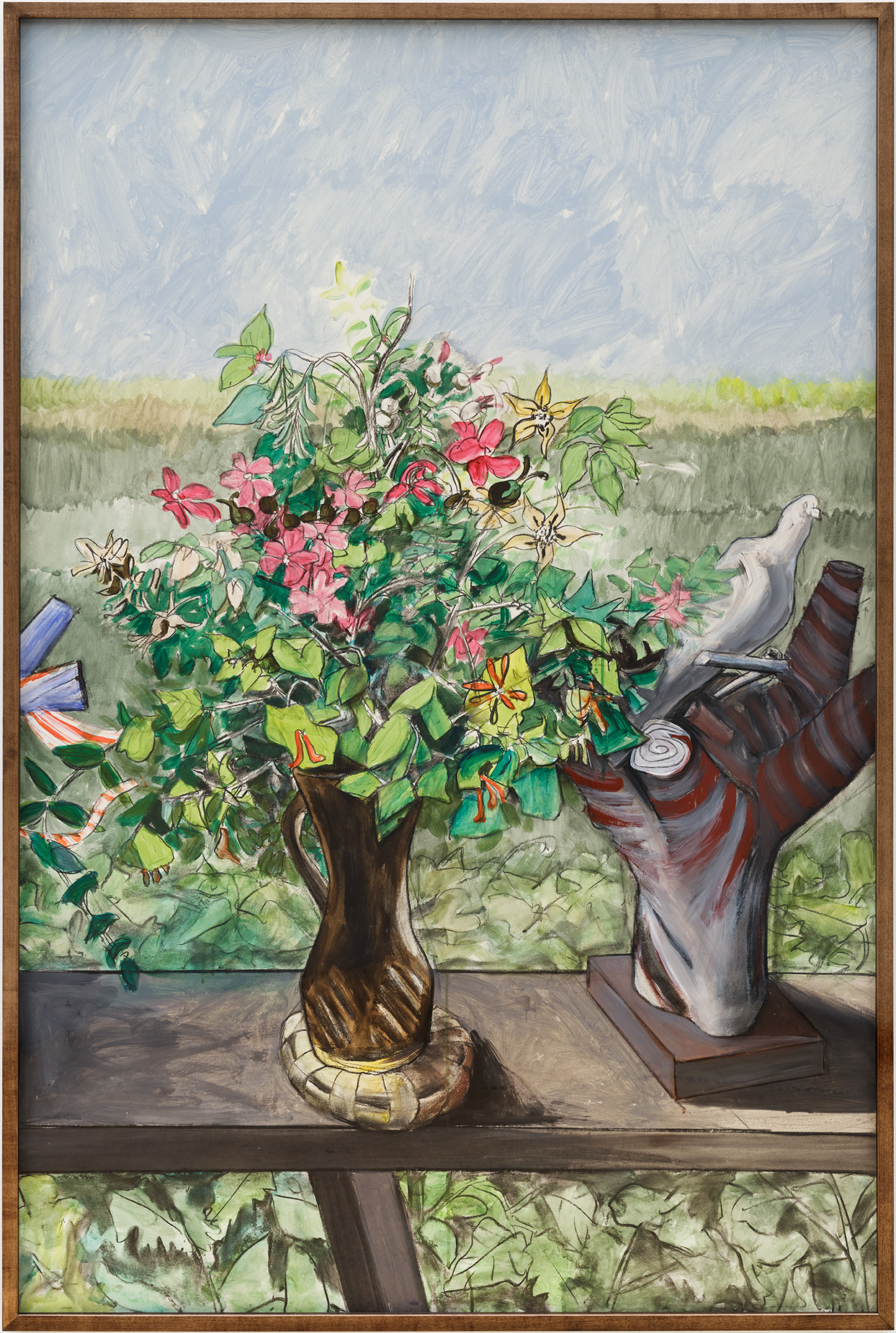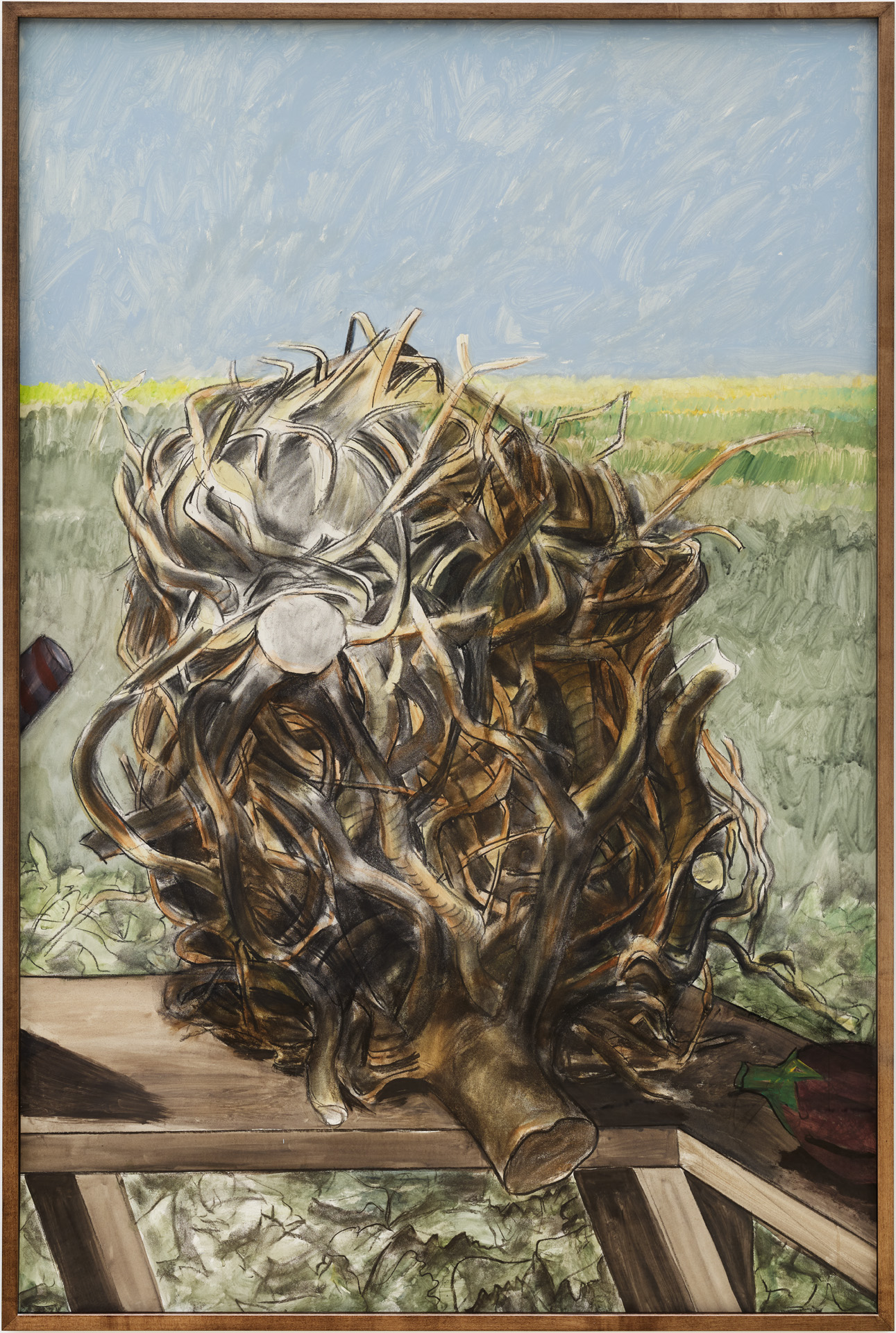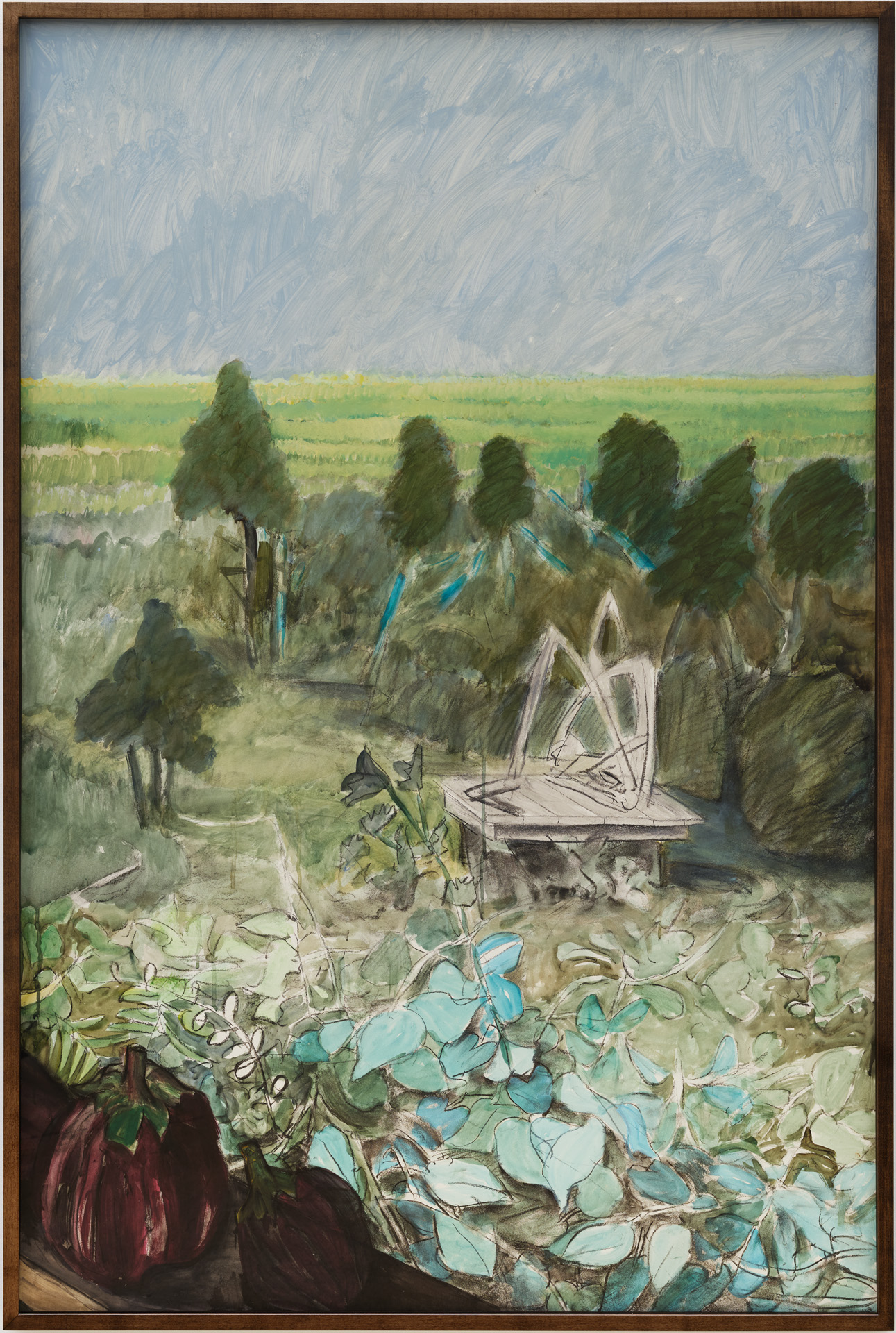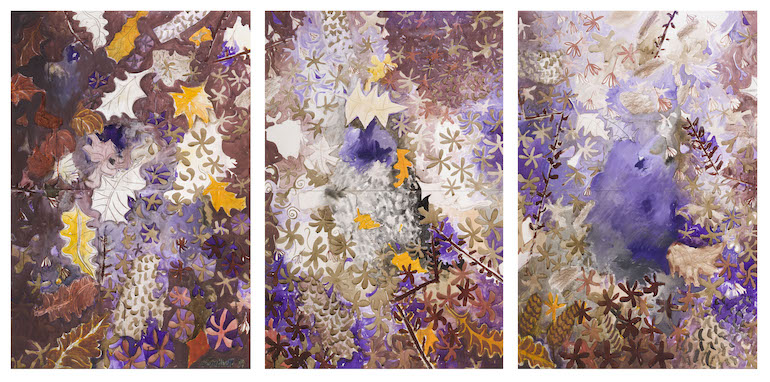The Estate of Jack Shadbolt
November 27, 2021 - January 8, 2022
One of Canada’s most innovative modernists, Jack Shadbolt (1909-1998) is known for his paintings and murals that drew from both personal travels and experiences of World War II as well as the social and political context of his time. Shadbolt was born in England in 1909 and at an early age immigrated to British Columbia. In 1930 he met Emily Carr, whose work, together with the Surrealists and early Abstract Expressionist, was very influential in his artistic development. Widely exhibited across Canada and in biennales abroad, Shadbolt’s work is in the permanent collections of all major Canadian museums, and he was recognized with the Order of Canada and the Order of British Columbia.
Shadbolt’s multi-paneled works are his most significant as they demonstrate the artist’s ambitious scale and his iterative process. Much in the way that chapters within a novel deepen the detail and narrative of a written text, the ability to keep adding panels to a work allowed Shadbolt the freedom to realize the full potential of his subject matter. As his imagery progresses from one discrete panel to another, it reveals his deep interest in metamorphosis and the transformative cycles of the natural world that include both and life and destruction.
For more information, please contact us at info@equinoxgallery.com
Featured Artists
